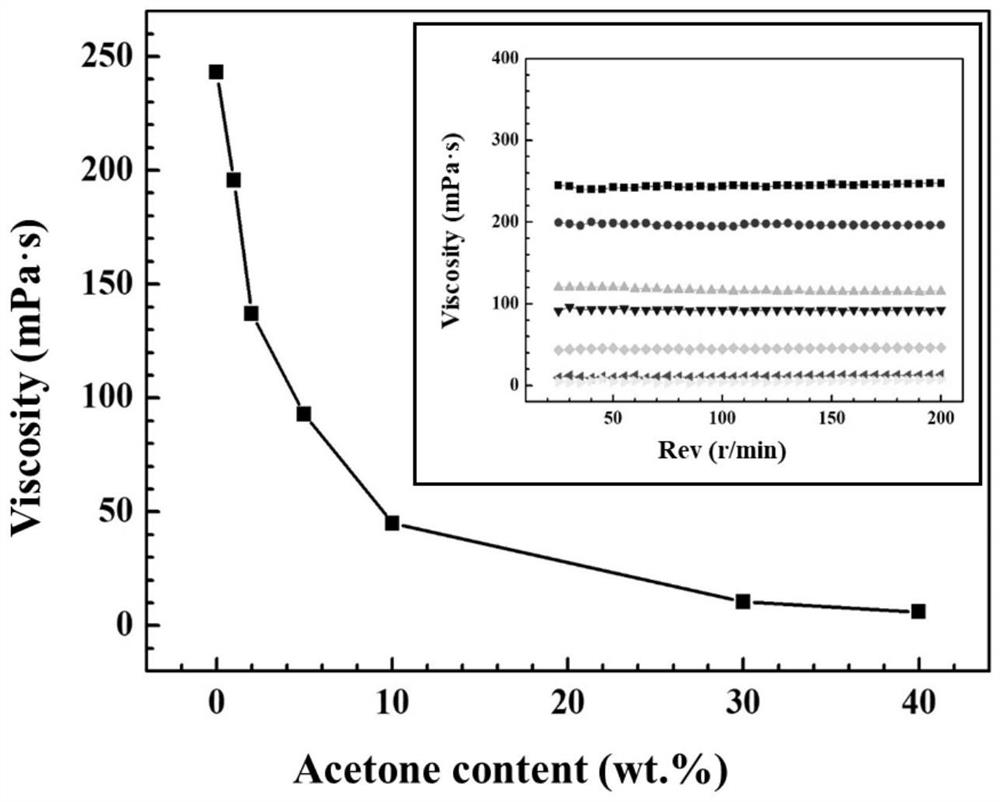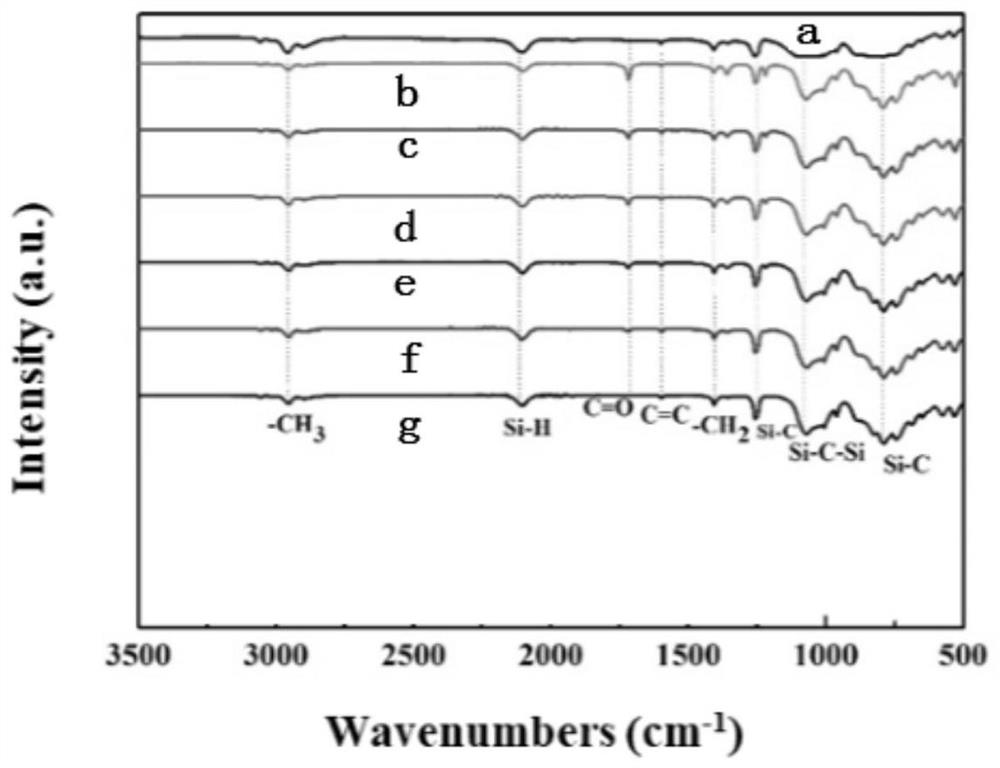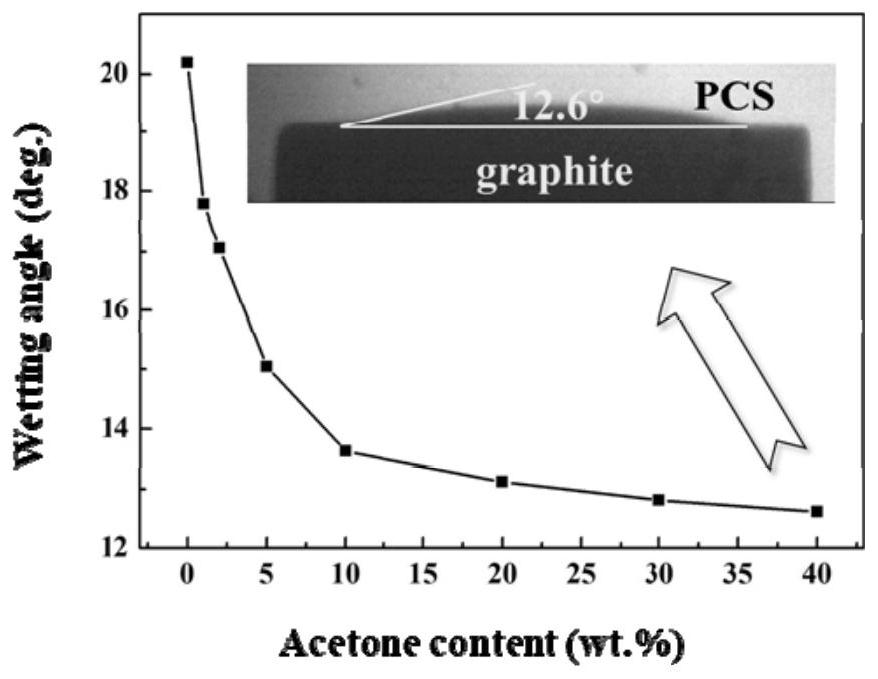A method for reducing the viscosity of polycarbosilane to improve the density of carbon/ceramic composites
A technology of ceramic composite materials and polycarbosilane, which is applied in the field of carbon/ceramic composite materials, can solve the problems of high toxicity of external organic solvents, performance defects of carbon/ceramic materials, and slow curing of PCS, so as to improve impregnation effect and impregnation efficiency , low cost effect
- Summary
- Abstract
- Description
- Claims
- Application Information
AI Technical Summary
Problems solved by technology
Method used
Image
Examples
specific Embodiment approach 1
[0033] Embodiment 1: A method of reducing the viscosity of polycarbosilane in this embodiment to increase the density of carbon / ceramic composite materials. The method is specifically completed according to the following steps:
[0034] 1. Weighing: Measure the acetone and curing agent and place them in a beaker;
[0035] 2. Prepare a uniform mixed solution: fully stir the acetone, curing agent and polycarbosilane precursor to obtain a uniformly mixed polycarbosilane-acetone mixed solution;
[0036] 3. Impregnation of polycarbosilane-acetone mixed solution: immerse the mixed solution in the previous step into the block to be soaked;
[0037] 4. Volatile acetone: volatilize the acetone in the block by heating;
[0038] 5. Put the polycarbosilane after the acetone has completely volatilized in a vacuum blast drying oven at 180-200°C for 1-2 hours;
[0039] 6. Place the fully cured sample in a tube furnace, and crack it in an argon atmosphere with a gas flow rate of 10mL / min, a...
specific Embodiment approach 2
[0048] Embodiment 2: The difference between this embodiment and Embodiment 1 is that the content of acetone in step 1 is 1wt.%. Others are the same as the first embodiment.
specific Embodiment approach 3
[0049] Embodiment 3: This embodiment is different from Embodiment 1 in that the content of acetone in step 1 is 2wt.%. Others are the same as the first embodiment.
PUM
| Property | Measurement | Unit |
|---|---|---|
| viscosity | aaaaa | aaaaa |
Abstract
Description
Claims
Application Information
 Login to View More
Login to View More - R&D
- Intellectual Property
- Life Sciences
- Materials
- Tech Scout
- Unparalleled Data Quality
- Higher Quality Content
- 60% Fewer Hallucinations
Browse by: Latest US Patents, China's latest patents, Technical Efficacy Thesaurus, Application Domain, Technology Topic, Popular Technical Reports.
© 2025 PatSnap. All rights reserved.Legal|Privacy policy|Modern Slavery Act Transparency Statement|Sitemap|About US| Contact US: help@patsnap.com



